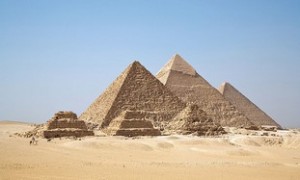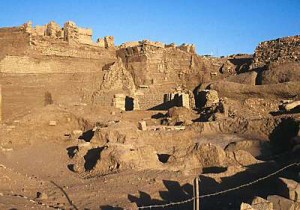Jewish Temples in Egypt
 One of the most overlooked subjects of biblical archaeology is the story of two Jewish temples that once stood in Egypt. Everyone knows about the Temple in Jerusalem; the first one was built on Mount Zion by King David’s son, Solomon. It was built in the 10th century BCE and destroyed some 500 years later by the Babylonians. 60 years later, Ezra and Nehemiah rebuilt the Temple. This second Temple stood for another 585 years until the Romans destroyed it in 70 CE.
One of the most overlooked subjects of biblical archaeology is the story of two Jewish temples that once stood in Egypt. Everyone knows about the Temple in Jerusalem; the first one was built on Mount Zion by King David’s son, Solomon. It was built in the 10th century BCE and destroyed some 500 years later by the Babylonians. 60 years later, Ezra and Nehemiah rebuilt the Temple. This second Temple stood for another 585 years until the Romans destroyed it in 70 CE.
But who realizes that, parallel with the existence of the Temple in Jerusalem, there were at least two Jewish temples outside the land of Israel? One was a small temple built on the island of Elephantine in the Nile at Egypt’s southern border,
It was built by a High Priest named Onias, who was the last of the pre-Maccabean Zadokite high priests. The Zadokite line was established during the reign of King David. They were ousted by the Maccabeans in the 2nd century BCE. Frustrated, they went to Egypt and built their own temple in Heliopolis. This created a spiritual crisis in the Holy land. In Jerusalem, you had a legitimate temple with an illegitimate priesthood. In Heliopolis, you had legitimate priests serving in an illegitimate temple. For the first time in eight hundred years there was a spiritual disconnect among the Jewish people. This caused many people to imagine that the real temple service, which was disrupted on earth, was continuing undisturbed in heaven. It was at this time that some people came forward claiming to be “chariot riders” i.e., they could live on earth but ascend to heaven and participate in the temple service above. These messiah figures like Judas the Galilean, Simon of Perea, and the Teacher of Righteousness, who is the star of the Dead Sea Scrolls, promised that they would link heaven and earth for their followers, ushering in a new era and a new temple. Jesus predicted that the Temple in Jerusalem would be destroyed (Mark 13:1-4) and that he would build a new one in three days (Mark 15:29). Later, some Christians would interpret “the Temple” as Jesus’ body and the “three days” as his resurrection. But it seems that Jesus meant what he said literally. He, like the other messiah figures, wanted to resynchronize the heavenly and earthly temples. So the remains of the Jewish temples in Egypt attest to a long forgotten crisis in the temple culture of the Jewish people. This crisis led to messiah figures coming forward, and these figures changed the world forever.
See: http://www.jpost.com/Opinion/Op-Ed-Contributors/Was-there-a-Jewish-temple-in-ancient-Egypt-318363
and http://www.jewishvirtuallibrary.org/jsource/judaica/ejud_0002_0015_0_15110.html

